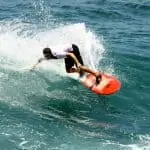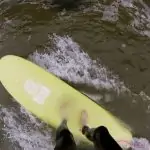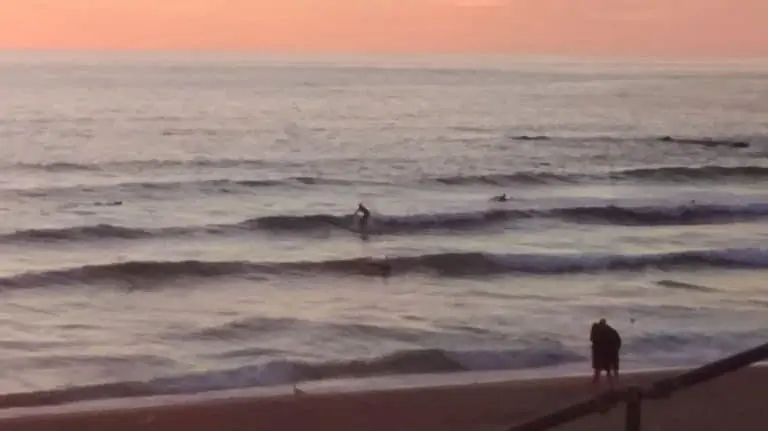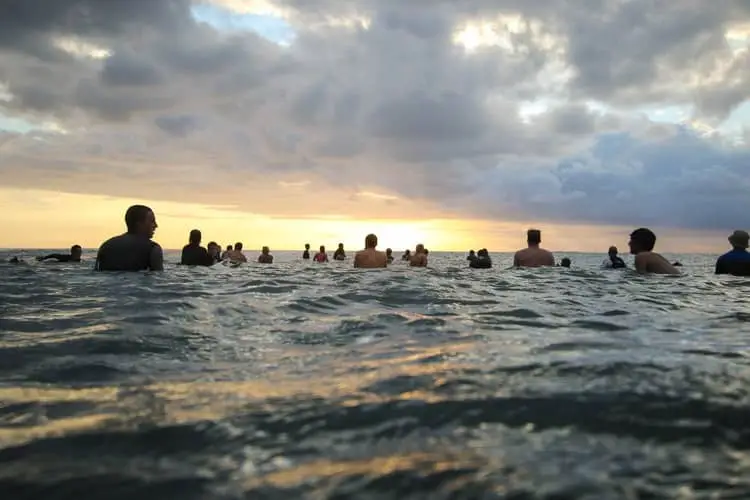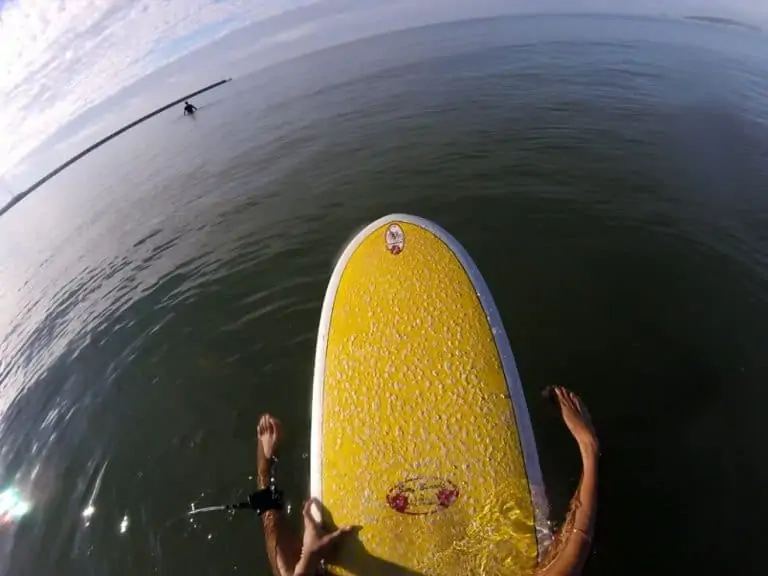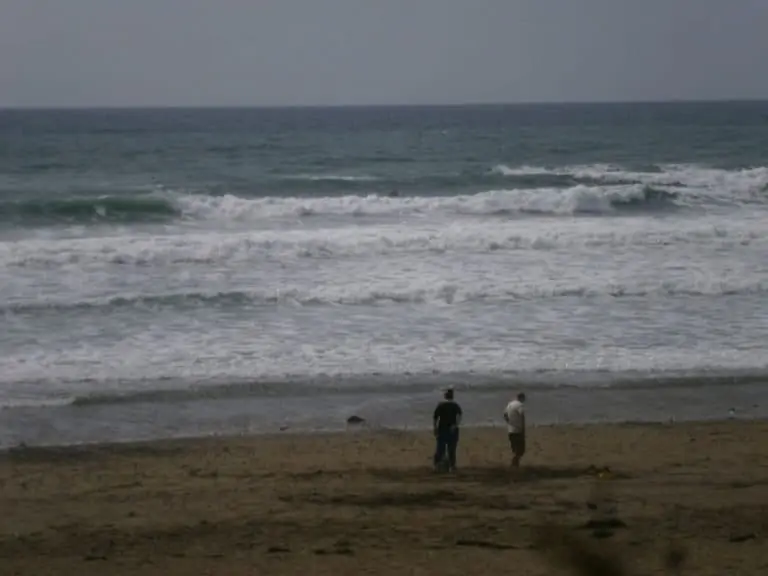The PERFECT Wave Size for Beginner Surfers
Beginner surfers are always on the lookout for the right kind of waves to learn in to help them progress faster and have more fun.
Although we all instinctively know that big and scary waves and not ideal for beginners, there are a lot of people who are not sure exactly what kind of waves they should be looking for in the early days.
So, what size waves should a beginner surf? Small waves around knee to waist high are perfect since beginners are only focusing on catching the waves and the pop up. These will also be a lot of fun to ride. However, there are a few caveats, as we’ll look at below in a little more detail.
Reasons to Learn in Small waves
Focus on Fun not Fear
Knee to waist-high waves are the ultimate beginner surf waves since they mean that you can learn to surf while having maximum fun.
The fun here is because you only need to think about catching waves and trying to learn, unlike when learning to surf in bigger waves where surfers have to think about paddling a lot more, as well as avoiding the impact of oncoming waves and bigger ‘set’ waves.
When you are out in these small waves, they will not be so powerful that they can do you much harm. I say this in the sense that even controlling the board in small waves is a common problem for beginners.
Waves can easily catch people off guard, and not having the board in the correct position can mean that the board can be easily pushed in to shore and take you along with it!
As smaller waves break in shallow water you will also have the easy option of just jumping on your board from a standing position when trying to catch a wave.
This means that you can then take lots of breaks from paddling and also give yourself a bit of a boost when starting out.
Paddling a surfboard takes a while to get used to and is surprisingly hard work, so you will be glad of this break when standing in the shallows waiting for the smaller waves (trust me on this!)
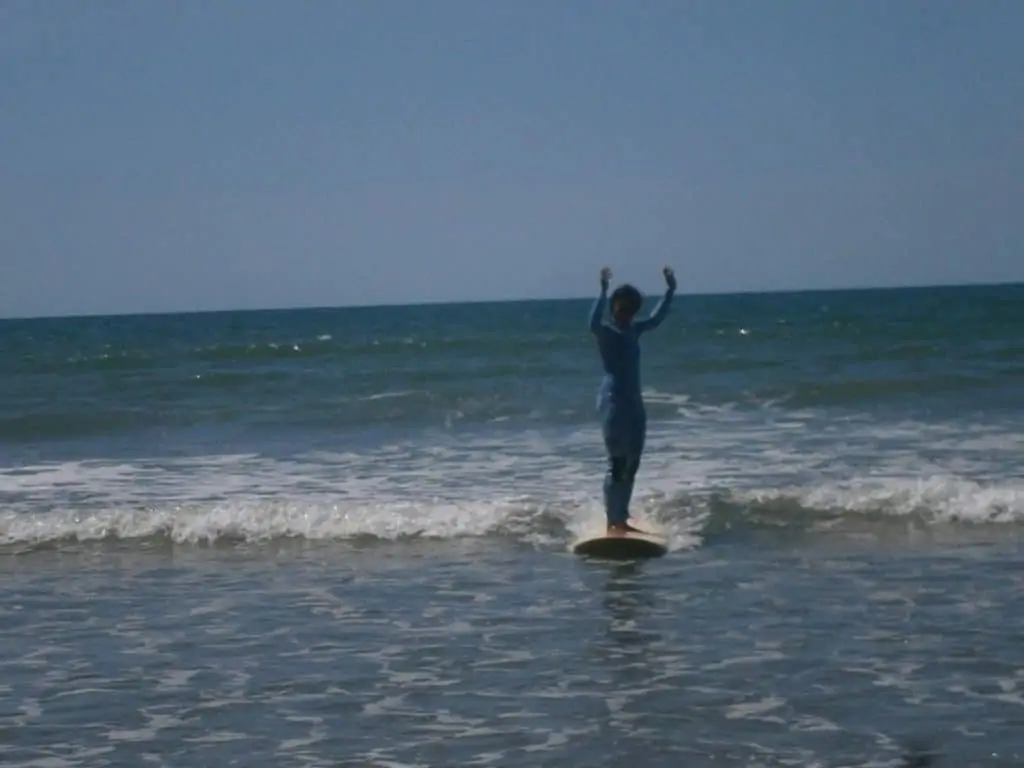
Closer to Shore
Further to the points above, riding smaller waves when learning to surf also means that you will be closer to shore.
This adds safety in the case that you need to get in quickly. For instance, conditions can change rapidly out in the surf and you may need to paddle back in to shore, so being in the shallows is a big help for that.
Things to look out for are rip currents with changes in the tide, as well as waves and wind changing.
Although unlikely, if you have a collision or an awkward fall, you can also then easily get back in to shore.
On top of this, you should be surrounded by other learners, meaning that more people might be looking out for you in case of any issues, too.
As mentioned above, learning to surf on the small waves in shallow waters also helps in terms of making it that bit easier for paddling and giving you a break in that you can stand up in between waves. This is not something you will have the luxury of in future so enjoy it while you can!
Fewer People and Out of the Way
Another reason why small waves up to waist high are perfect for learning in are because they break out of the way of the more advanced riders.
This means that you don’t need to worry about getting in their way. When someone is riding towards you on a wave, it is generally on you to get out of the way, although the surfer also has to control where they go and in what direction.
It’s also good not to annoy people in the surf when you are learning as they can see you as a liability or even a hazard if you can’t yet control your board.
For this reason, staying closer to shore and learning in the small waves is yet again the best option.
You will also find that there are fewer people in the area with smaller waves, giving you more room to have fun.
For me, there is nothing worse than surfing in a crowded lineup with all manner of people jockeying for position. Fortunately, this isn’t really an issue if catching the waves close in to shore since far fewer people go surfing on those days.
It’s true that there will be other learners in the vicinity, but they will also have softboards and be able to stand up if anything goes wrong, just like you!
I should add here that there is no rush to be able to paddle further out and catch the bigger waves since it will take time to progress in surfing so you should just enjoy it as a process and have fun in the shallows as you learn.
To find out more, definitely check out my article about how long it might take you to progress through the various stages of learning to surf, with a time estimate in hours for your progression.
Big Boards for Learning
Yet another key reason for learning to surf in small waves is that your learner surfboard is made for waves like this!
Good learner surfboards should be soft, pick up waves easily, and are easier to stand up on. As a result of their design, catching small waves is a piece of cake on a learner board, and you can ride them without a problem.
This means that you can then catch lots of waves without a crowd and start progressing that much faster. After all, you can only really progress if you catch waves, so between a quieter part of the beach and the right board, small waves make for the perfect canvas to get better at surfing.
You should also check out my detailed post on the best time to surf for beginners to give you the best info on choosing the right time of day for you to hit the waves.
Remember: Progress to Bigger Waves Later
If all the above has left you thinking “Yeah, small waves are great and all but I want to ride big waves!” then try to remember that you will need to be patient.
Beyond learning to stand up and ride a surfboard, you will also need to master the deceptively difficult skills of paddling, duckdiving and sitting upright on your surfboard before you are able to venture out further into the lineup.
This can take you dozens of hours in the surf to master, even though they sound simple.
You will also need to know etiquette and be ready for crowds and all other aspects of surfing before you can join the party in the bigger waves, so don’t try to skip a step.
If you paddle out in bigger waves too soon, you will only annoy the more advanced surfers and might make yourself unwelcome the next time you paddle out, so think carefully before trying to fastrack your progress ahead of time!
Related Question
What is a good beginner surf height? Knee to waist high waves are perfect, although you can go a little smaller if you have a really big board. Smaller waves are playful enough to learn on yet not big enough to be scary, making them the perfect beginner surf conditions.
Related Articles
If you enjoyed this, make sure to check out the following articles also on Surf Learner to help you learn that much faster:
